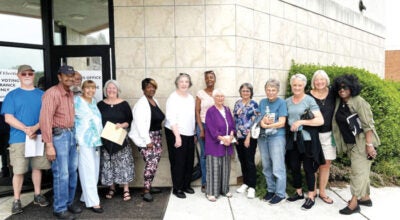Race and police shootings
Published 12:03 pm Friday, July 8, 2016
The Baltimore Sun
When police shot and killed Alton Sterling in Baton Rouge, La., this week, law enforcement officials there immediately called for the Department of Justice to take over the investigation. When police shot and killed Philando Castile during a traffic stop near St. Paul, Minn., Wednesday night, immediate calls came for the federal government to take over that case, too. As Baltimore watches the beginning of yet another trial of a police officer indicted in connection with the death of Freddie Gray, we can see the appeal. The objectivity, thoroughness and independence of the investigations into his death have been questioned from the start and from all sides _ most recently blowing up in a courtroom confrontation between prosecutors and police.
But the notion that the federal government can secure criminal convictions where local officials cannot (or don’t even try) is belied by the record. The Justice Department made no indictments in the killings of Trayvon Martin in Sanford, Fla., or Michael Brown in Ferguson, Mo., and regardless of the gruesome evidence provided by the videos in the deaths of Sterling and Castile, it may have difficulty mounting a prosecution in either of those cases either. The federal government does not prosecute murder or manslaughter cases. Rather, it can bring charges of civil rights violations in cases like these, but doing so requires that prosecutors prove the defendants willfully harmed the victim because of his race _ an extraordinarily high burden of proof, particularly given the wide latitude police are afforded to use force when they believe they are threatened. It’s not enough that the police in both of these cases are white and that the victims are black.
But we don’t need to prove that the killing of Sterling and Castile were motivated by intentional acts of racism to conclude that race was a crucial factor in what took place. The story by now is simply too familiar.
Sterling was sitting outside a convenience store selling CDs (with the store owner’s permission) when someone called police to claim that a person matching the 37-year-old’s description had threatened him with a gun. Police arrived at about 12:35 a.m. on Tuesday, and according to the store’s owner, they were aggressive from the start. Video shows one officer tackling Sterling, banging him against the hood of a car and taking him to the ground. Another officer pins his shoulders and arm. One yells “He’s got a gun,” though no gun is visible in either of two videos that have been made public. An officer draws his gun and points it at Sterling’s chest, firing an instant later. One of the videos shows an officer pulling something from Sterling’s pocket after the fact.
In Castile’s case, we do not have video of the shooting itself but the aftermath, which was live streamed by a passenger in the car. While an officer points a gun through the window, she explains with an eerie calm that a policeman had shot her boyfriend. When pulled over for a broken tail light, she says, Castile told the officer that he had a gun and was licensed to carry it. When he reached for his wallet to get his license _ at the officer’s request, she says _ he was shot.
When Cleveland police saw Tamir Rice playing with a toy gun, they assumed it was real and opened fire. When Baltimore police saw Freddie Gray run, they assumed he was breaking the law, chased him, brought him to the ground and eventually placed him, handcuffed, shackled and face-down, in the back of a police van. When Samuel DuBose started his car during a traffic stop in Cincinnati, a university police officer assumed he was about to be run over, pulled his gun and fired.
Of all the recent killings of black men at the hands of police that have been investigated by the justice department, only one, the fatal choking of Eric Garner in Staten Island, appears to have gotten so far as a federal grand jury. But whether or not any of them amount to prosecutable hate crimes, they clearly fall into a pattern in which police are quick to perceive black men as threats and to escalate confrontations with them to tragic ends. Until we can remove that stain of prejudice, we will continue to see deaths like these, no matter who investigates after the fact.


